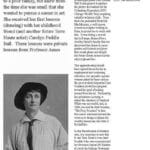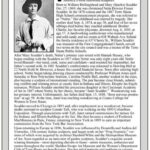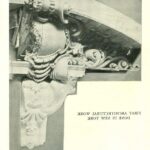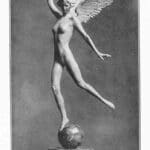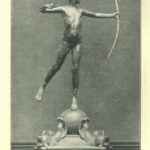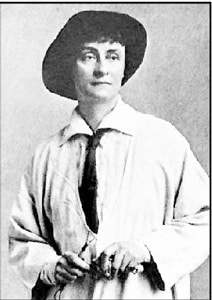
October 27, 1869 - Janet Scudder (Oct 27, 1869 – June 9, 1940)
By Sherri Wright
Janet Scudder was born Netta Deweze Frazee Scudder in Terre Haute in 1869 to a poor family, but knew from the time she was small that she wanted to pursue a career in art. She received her first lessons (drawing) with her childhood friend (and another future Terre Haute artist) Carolyn Peddle Ball. These lessons were private lessons from Professor Ames at Rose Polytechnic Institute. Through encouragement from teachers and sacrifice by her family, she was able to study at the Cincinnati Academy of Art at the age 18. It was there that she changed her first name to Janet. She found employment with Lorenzo Taft for his project to produce the plaster decorations for the Columbian Exposition (1893 Chicago World’s Fair,) acquiring valuable technical skills. From there she persuaded Frederick MacMonnies, a well-known American sculptor working in Paris, to permit her to study with him. It was during a second trip to Europe, financed by a wealthy friend’s family, that she discovered her desire to create garden and fountain sculpture that would please and delight her future clients as much as the subject pleased her.
This apprenticeship should have opened doors for her in employment and continuing education, but prejudice against women artists by those such as the great sculptor August Saint Gaudens slowed her progress toward her goal of making money from her art. Fortunately, her persistence in trying to attract the attention of Stanford White was successful, and, in 1900, she sold her first fountain, “The Frog Fountain” to him. Her career was launched and she went on to design sculpture for wealthy Americans like John D. Rockefeller.
In the Bicentennial celebration year, it is important to note that it was Terre Haute’s own Janet Scudder who was commissioned by Governor Samuel M. Ralston to create the Indiana Centennial Medal. The front of the medal was a beautiful representation of “the baby state of 1816 being welcomed to the Union with the historic state house of Corydon and the Constitution Elm in the background.” On the reverse side was the State Seal.
Scudder’s contributions were not limited to art. She spoke on behalf of Woman’s Suffrage and worked with the American Red Cross during WWI. She returned to America for the last time on the eve of WWII in 1939. She died in 1940.

